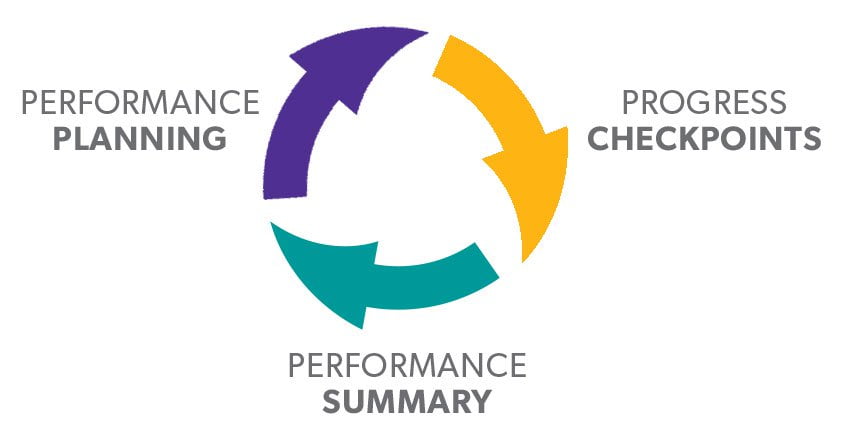
In today’s team and collaborative environment, having a performance review with employees is a great communication and evaluation tool. A survey conducted by SHRM in fall of 2012 shows that 74% of companies perform reviews annually, while 21% conduct reviews semi-annually. A small percentage performs them quarterly or ongoing.
However, with most companies conducting some type of performance review, still 4 out of 5 U.S. workers are dissatisfied with their job performance review, according to a 2009 Reuters poll. So how can you conduct a review that will be beneficial, to both you and the employee?
We spoke with Tom Ault, Director of Technical Training at ERC, about how to use benchmarking to not only improve your organization’s measurement of the quality of policies, products, programs, and strategies, but how to make the employee more happy and comfortable with the process.
How to conduct
Keys to effective performance management include setting clear goals, determining key job responsibilities, identifying and using competencies, coaching continuous feedback, and giving objective appraisal for performance.
However, performance reviews don’t always go how you or the employee would like, due to:
- Infrequencies
- Being seen as subjective
- Having a lack of focused goals
- Being viewed as inconvenient
- Being seen as de-motivating
Expert Tip: Use a Performance Management Cycle. This is a year-round process where managers and employees can work together to set expectations, have regular open communication, prove feedback and coaching, and compare new expectations to original ones. It is made up of three distinct components:

If done properly, there should be no surprises when it comes down to formal reviews. Managers should be having those regular one on ones to ensure items are being discussed.
Benchmarking
Benchmarks are standards for an employee’s work that a company sees fit for the organization. The employee’s ability to meet those benchmarks can be used as the foundation of the performance evaluation.
Make sure to set benchmarks in several areas and communicate your expectations and where you would like to see your employees succeed and improve in.
Setting goals
When setting goals, it is important to establish goals and objectives that meet the S.M.A.R.T. criteria. Each goal and objective should have associated targets and descriptions of expected end results and due dates.
Each goal and objective should be:
- Specific
- Measurable
- Attainable
- Realistic
- Timed
Here is an example of an established goal and objective:
Who is Responsible + Action Word + Key Result + Measurement + Target Date
Example: Jim will grow revenue by 10% over last year by December 31, 2015
It is important to keep in mind that if expectations are being met or exceeded, then positive reinforcement should be given. If a gap exists, then an action plan should be put in place to make sure their future performance meets expectations.
Objectives
When it comes to objectives, there are a few things you want to make sure are in place for the employee to succeed. First, be sure to keep open communication between yourself and the employee about the results achieved as compared to predefined expectations.
It’s also important that the manager provides the assistance needed for the employee to succeed, as well as the employee’s suggestions need to meet performance expectations. Another important aspect is to take into consideration the employee’s suggestions on how to make improvements.
Performance Summary
It is very importation to document everything when conducting an employee review. Make sure to write the performance appraisal using the method S.O.C.– be Specific, Objective, and Consistent. Also, be sure to focus on the performance and behaviors of the employee and not their personality.
While writing the summary, make sure it’s a summarization of all the information discussed during the performance planning. Actual results then can be compared to the targets set, recognize performance that meets or exceeds expectations, and the gaps where results did not meet expectations are identified.
When it comes down to performance reviews and benchmarking, it’s ultimately about trust.
The foundation of good performance discussion is the trust that comes from a respectful relationship between the manager and the employee. If there is trust, just about anything can be discussed in a way that is of value to the employee. If there is no trust, then the conversations can be very tough and discouraging.
